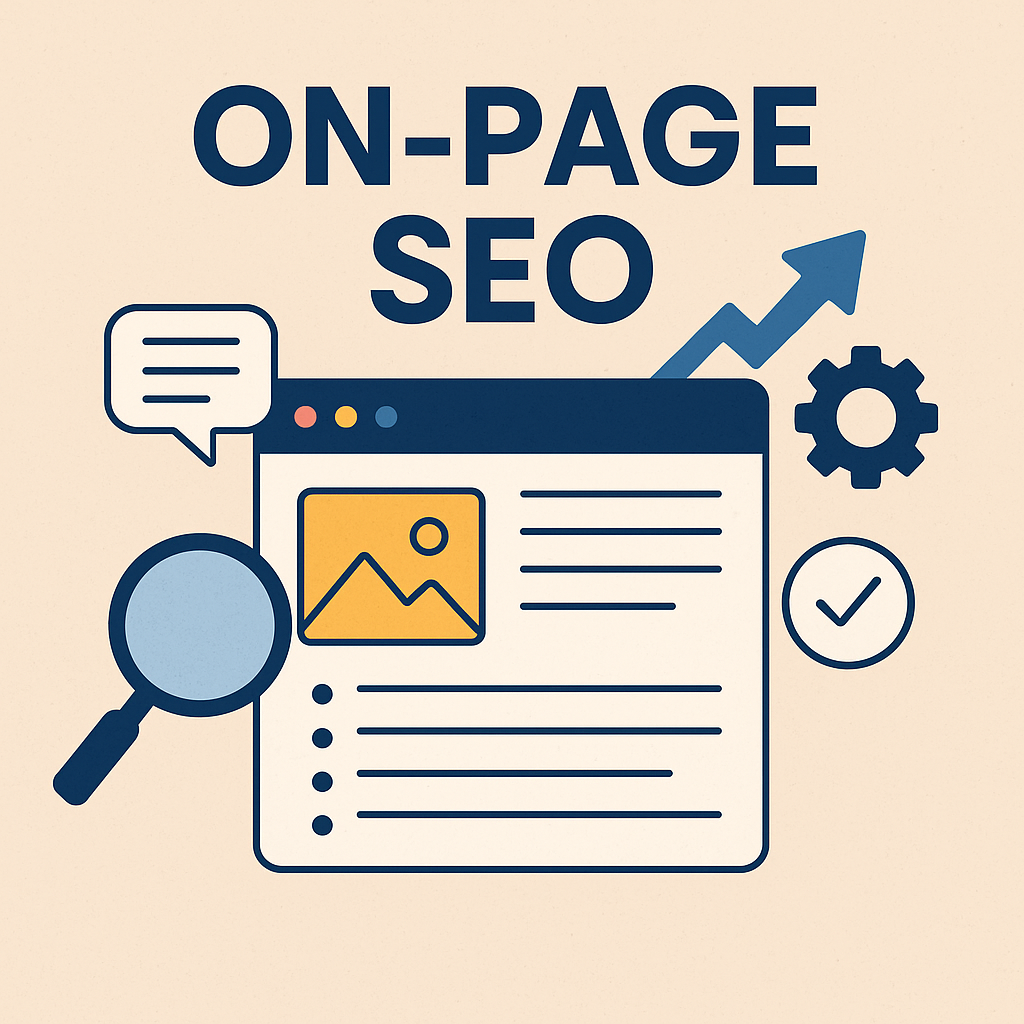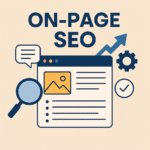In the world of digital marketing, Search Engine Optimization (SEO) is a critical strategy for driving organic traffic to websites. While many factors influence a website’s visibility on search engines, on-page SEO is one of the most fundamental. It focuses on optimizing individual web pages to improve their ranking and attract relevant traffic. Unlike off-page SEO, which relies on external signals such as backlinks, on-page SEO gives you full control—making it a vital aspect of any SEO campaign.
What Is On-Page SEO?
On-page SEO refers to all the actions you take directly on your website to help search engines understand your content better and rank it accordingly. This includes optimizing content, HTML source code, images, and internal links. The goal is to make your website user-friendly and easy for search engines to index and interpret.
Key Elements of On-Page SEO
1. Keyword Optimization
Every piece of content should start with keyword research. Use tools like Google Keyword Planner, Ahrefs, or Ubersuggest to identify keywords your target audience is searching for. Once selected, incorporate them naturally into key areas:
- Page title
- URL
- Meta description
- Headings (especially H1)
- First 100 words of your content
- Alt attributes for images
Avoid keyword stuffing, which can hurt your rankings and disrupt readability. Instead, use synonyms and related terms to help search engines understand the context.
2. High-Quality Content
Content is still king in SEO. Your content should be:
- Original: Avoid duplicate content.
- Valuable: Solve problems or answer questions for your audience.
- Comprehensive: Cover the topic in depth without unnecessary fluff.
- Readable: Use short paragraphs, bullet points, subheadings, and visuals to enhance user experience.
Google’s algorithm favors content that demonstrates E-E-A-T: Experience, Expertise, Authoritativeness, and Trustworthiness.
3. Title Tags and Meta Descriptions
The title tag is one of the most important on-page SEO elements. It appears in search engine results and the browser tab. Keep it under 60 characters and include your target keyword close to the beginning.
Meta descriptions don’t directly affect rankings but can impact click-through rates. Write compelling, concise summaries (about 150–160 characters) that entice users to visit your page.
4. Header Tags (H1, H2, H3, etc.)
Header tags structure your content and make it easier to read. The H1 tag should include the primary keyword and describe the page topic. Use H2 and H3 tags for subtopics and to improve flow.
5. URL Structure
Clean, descriptive URLs help both users and search engines. Include the target keyword and avoid unnecessary words or symbols. For example:
bash
CopyEdit
example.com/on-page-seo-tips
is better than
bash
CopyEdit
example.com/blog/123456?id=45
6. Internal Linking
Linking to other relevant pages within your website helps search engines crawl your site more effectively and keeps users engaged longer. Use descriptive anchor text instead of generic terms like “click here.”
7. Image Optimization
Images enhance content but can slow down your site if not optimized. Use compressed file formats (WebP, JPEG), include descriptive file names, and add alt text for accessibility and SEO.
8. Mobile Friendliness
With the majority of users browsing on mobile devices, a responsive design is essential. Google uses mobile-first indexing, meaning it primarily evaluates the mobile version of your site.
9. Page Load Speed
A fast-loading site improves user experience and is a known ranking factor. Use tools like Google PageSpeed Insights or GTmetrix to identify and fix issues like large image files, unoptimized code, or slow hosting.
Final Thoughts
On-page SEO is the backbone of a strong search presence. By focusing on the quality and structure of your content, as well as the technical details of your pages, you not only improve your search engine rankings but also provide a better experience for your visitors. Remember, SEO is not a one-time task—it’s an ongoing process. Regularly audit your site, update old content, and stay informed about search engine algorithm changes to maintain your competitive edge.








Leave a Reply